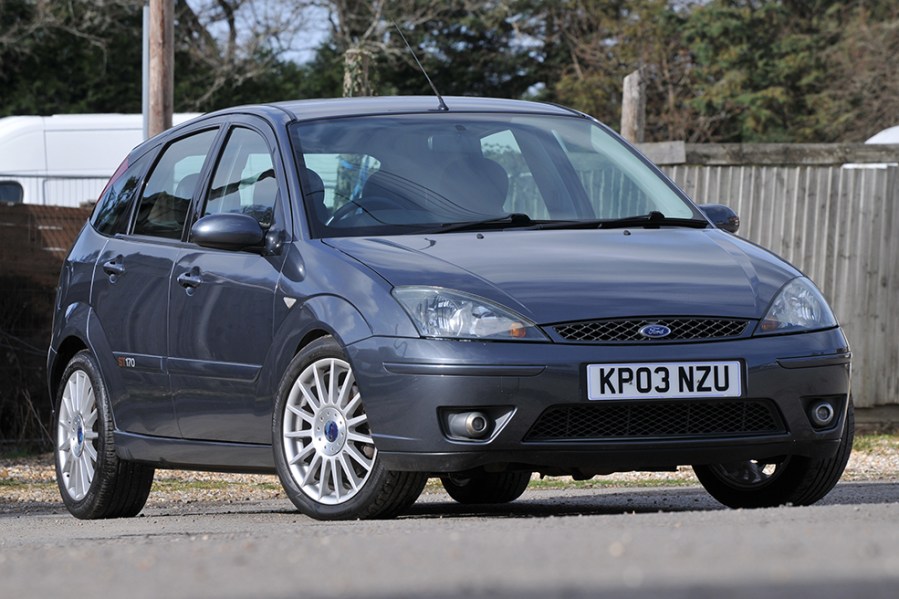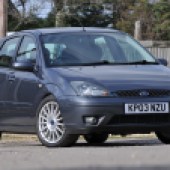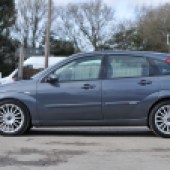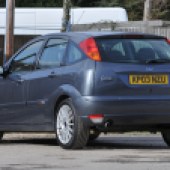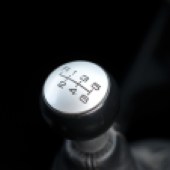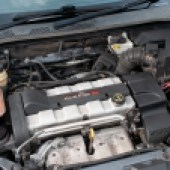With the RS now a collector’s piece and valued accordingly, the ST170 makes an intriguing case for itself as the first go-faster Ford Focus
Back in the late 1990s I was editor of Fast Ford magazine and so was present on the press launch of the original Ford Focus, an event which was notable for Ford’s new-found confidence in its products’ dynamic prowess. Buoyed by the enthusiastic reception of the Mondeo and then the Puma, Ford was sufficiently proud of the Focus’s handling to let the UK’s motoring writers loose on track… and not just any track, but a go-kart track. The humble Ford hatchback’s sharp turn-in and general poise really shone on the twisty little circuit and in the bar afterwards the talk was inevitably of when the hot version would arrive.
At Fast Ford both we and the readership had already been waiting for successors to the RS-badged icons beloved by the tuning industry, but they were slow in coming. First we had the Mondeo ST-24, a stiffened up but otherwise mechanically identical version of the Ghia, while the very capable ST200 arrived in 1999 with 200bhp from its uprated 2.5-litre V6 – but even so it was more XR than RS.
The Focus teased the enthusiasts for even longer; I remember being distinctly underwhemed by a 2.0-litre three-door which arrived for a week’s press loan and bizarrely seemed to lack the fizz of our well-thrashed 1.8 Zetec pool car. Indeed, we even created our own uprated Focus for a reader giveaway competition by plucking a brand new 1.8 three-door from a local dealer and adding bigger wheels, lowering springs and the body styling kit from the RS accessories brochure. With a performance induction kit, uprated exhaust and a custom remap it was livelier than the standard 1800 and even the disappointing 2.0-litre, but was hardly cutting-edge.
Hopes were kept alive by sightings of a Focus Cosworth concept displayed by Ford in the USA, but when the first faster Focus did arrive in 2002 as the ST170, it appeared with surprisingly little fanfare. This was perhaps down to the use of the ‘ST’ badge rather than the full-fat RS tag, but those of us in the know realised that it was very much a statement of intent.
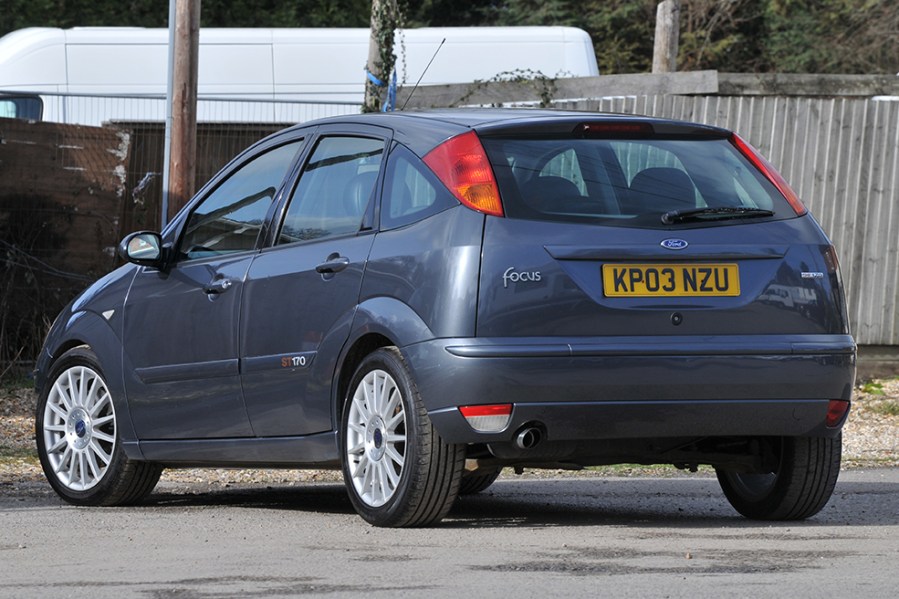
It was proudly British, too. The ST project – going by the internal project name Piranha – was presented as a joint development between the American Special Vehicle Team (SVT) department and Special Vehicle Engineering (SVE) here in the UK, but in reality the essentials were the work of SVE. The engine was based around the 2.0-litre Zetec but with extensive revisions to liven it up considerably. Most obvious was the addition of variable cam timing, although a softer system than Honda’s VTEC and acting only on the intake side.
To suit its higher revving nature the internals received lightweight cast aluminium pistons and forged con rods, while the inlet valves were enlarged and gained stronger springs to suit a 7000rpm peak power output, with a stainless tubular exhaust manifold and free-flowing exhaust system terminating in a bold chrome tailpipe. The end result was a dramatic shift in personality over the regular 2.0-litre Zetec, with a rev limit of 7300rpm and a maximum 170bhp.
As if to prove that this was a properly thought-out development process, the transmission was also upgraded to provide the six speeds which were just beginning to gain popularity in the era, albeit generally in more serious prestige machinery. For this, Ford unusually went out of house and bought in a box from ZF, coincidentally the same unit found in the MINI Cooper S.
Naturally, SVE also lavished attention on the chassis, an area in which the Focus’s ability in cooking form perhaps made it hardest to achieve an appreciable improvement. They managed it, despite road testers of the day considering the regular car to be stiffly sprung for a family hatchback. Springs and dampers were all uprated at both ends, while unique suspension bushes were added to the mix and thicker anti-roll bars were also fitted. Naturally, 17-inch wheels were fitted, behind which were larger 300mm front and 280mm rear discs gripped by larger calipers, while the ST gained a quicker steering rack and a ‘falling rate’ power steering pump designed to reduce assistance at higher speeds.
This being a Ford, subtle M5-style appearance wasn’t an option, although by the standards of the original Escort RS Turbo for example, it was relatively muted. Inside, you found a leather covered wheel, white-faced dials, drilled aluminium pedals, Recaro seats and an optional uprated sound system complete with built-in sub woofer in the boot. Reshaped bumpers at both ends, the wheels and badging were the only identifiers on the outside.
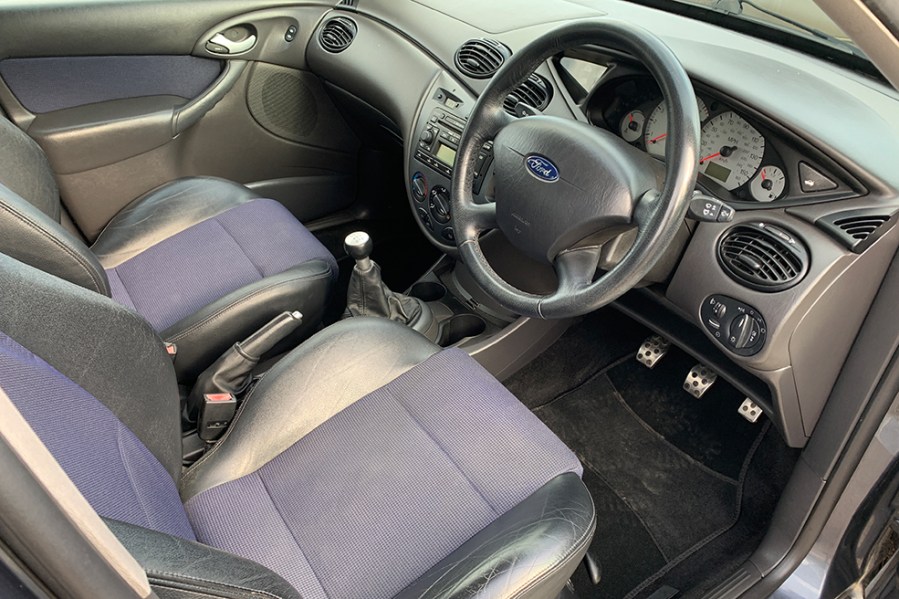
Offered in three-door and five-door form, with an estate added to the line-up from 2003, the ST170 was one of those cars which on paper sounds like the answer to enthusiasts’ prayers and a world class contender, yet which remains a relatively rare sight.
The appearance of the full-fat Focus RS shortly after the ST170’s launch is one factor of course although it was a step up in price. What really limited the ST170’s sales was its short life: it was offered in the UK from January 2002 to December 2004 which meant that by the time the market had woken up to its appeal it was already on borrowed time.
Today though, its rarity is appealing, as is its significance as the first of the genuinely fast Focus models which set the scene for the revival of Ford as a performance brand in Europe. What’s more, if you can find one then they’re amazingly affordable: expect to pay just £2000 for a shabby example, with even the nicer ones hovering around the £3000-£4000 mark.
Approaching the ST170, initial thoughts are what a neat piece of design the original Focus was, yet how slender it seems in a modern context. Climb aboard and the first thing a seasoned Focus driver will notice is the improvement the Recaros make: the Focus was notable for its curious feeling that you were sitting on it rather than in it, something the sports seats remove.
Twist the key – there’s no starter button gimmickry here – and it takes a keen ear to spot the difference over the regular 2-litre. Clearly, this is no highly-strung low-volume tuning job but a properly developed package and at low speeds it feels very much like the Focus we’ve come to know and love – with maybe a slightly more positive feel and stiffer change action from the Getrag box.
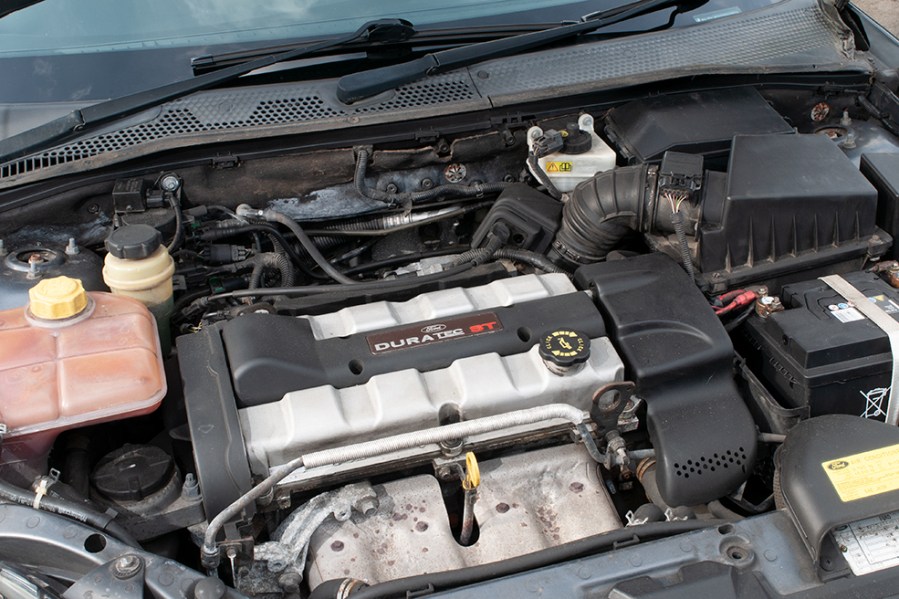
Like many of the high-performance Hondas, the ST170 is a car even the utterly disinterested could potter about in quite happily. Indeed, you could drive for years without ever realising its potential if you never revved it hard enough to discover the variable cam timing.
When you do extend it though, the strength of the engineering shines through in the even spread of torque – Ford claimed 85% of maximum pull was on offer from just over 2000rpm – and its flat power curve. Yes, it lacks the abrupt change in character of a Honda VTEC but is impressive in a quieter way and is in fact easier to get the best from than the rather lairier RS. Its relatively conservative power output also avoids overwhelming the front wheels with torque steer, meaning it’s an agreeable car to drive briskly – and far less tiring than for example its RS Turbo ancestor.
That SVE obviously tuned the handling for British roads is obvious when you start to push on a bit. Yes, the ST170 rides more stiffly than the regular Focus of the era but the subtle changes avoid crashing and shuddering on our scarred surfaces, aided by the Focus’s impressive bodyshell rigidity. Turn-in is noticeably sharper and the car’s poise feels heightened to the point where you can imagine it cocking a rear wheel, Golf GTI-style in extremes. Otherwise, it’s all standard Focus behaviour and all the better for it.
You don’t need more than half an eye on the big classic car auctions to know that hot Fords are highly valued these days and a first-generation Focus RS will command many times the value of even the best ST170, making this first SVE Focus something of a hidden gem.

